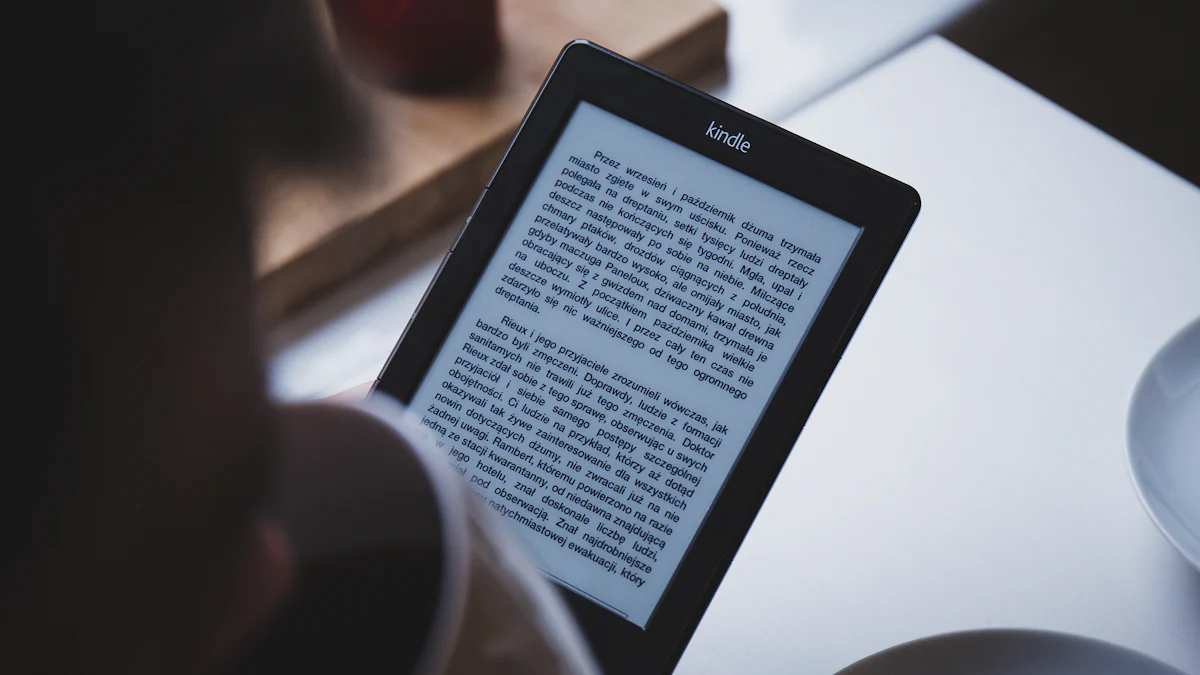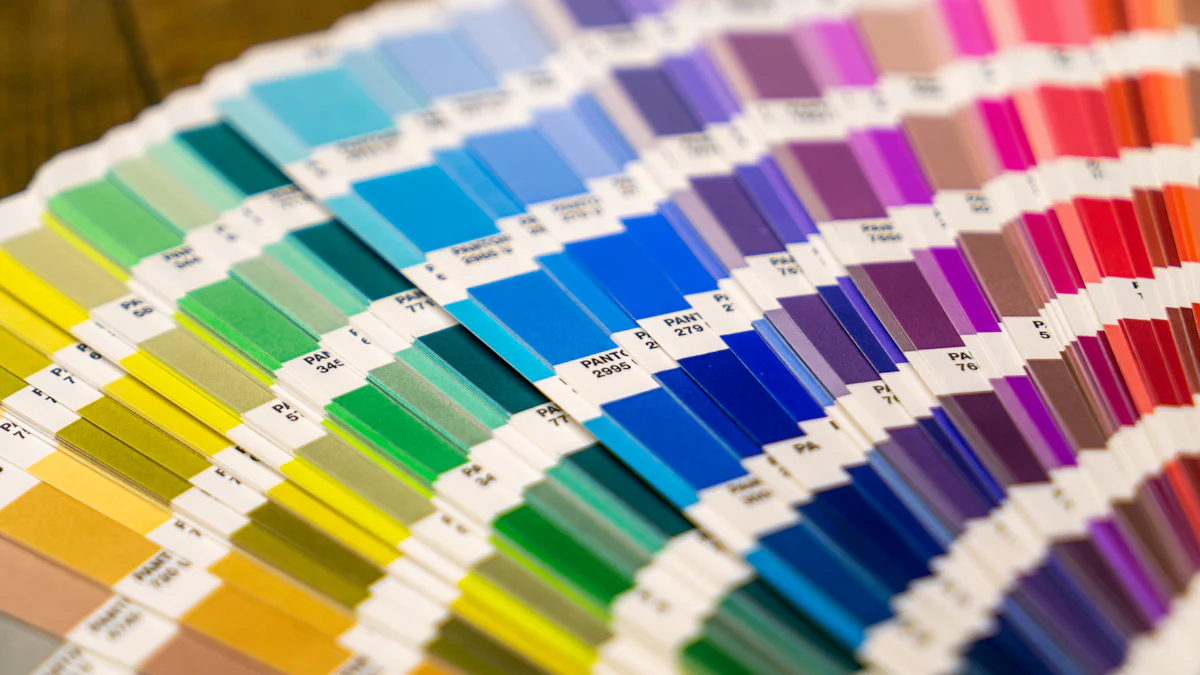
Choosing the right image format can make a big difference in how your digital content looks and performs. Different formats serve different purposes. JPEG is great for photos, while PNG works well for graphics. Websites often use PNG, with 81.1% of them opting for this format. Each format has its strengths. Understanding these options helps you make informed decisions. Dive into Image Conversion 101: Understanding Different Formats and Their Uses to explore more.
Image Conversion 101: Understanding Different Formats and Their Uses

Basic Concepts
What is an Image Format?
An image format determines how a computer stores and displays your pictures. Each format has unique characteristics. Some formats compress images to save space. Others preserve quality for printing. Choosing the right format can affect how your images look and load on different devices.
Importance of Choosing the Right Format
Selecting the correct image format impacts your digital content's performance. A suitable format ensures quick loading times on websites. It also maintains high quality for print materials. Using the wrong format can lead to blurry images or slow websites. Understanding formats helps you make informed decisions.
Types of Image Formats
Raster vs Vector
Raster and vector formats serve different purposes. Raster images consist of pixels. These formats include JPEG, PNG, and TIFF. Raster images work well for photos and detailed graphics. Vector images, like SVG, use mathematical formulas. Vectors scale without losing quality. This makes them ideal for logos and illustrations.
Common Image Formats Overview
-
JPEG: A popular choice for digital images. JPEGs compress files to save space. This format works best for photos. However, repeated editing can reduce quality.
-
PNG: This format offers lossless compression. PNGs support transparency and millions of colors. They suit web graphics and complex images.
-
TIFF: Known for preserving detail, TIFFs are perfect for printing. This format keeps images sharp and clear. However, TIFF files can be large.
-
SVG: SVGs excel in responsive web design. This vector format scales beautifully. SVGs work well for animations and interactive content.
Understanding these formats helps you choose the best one for your needs. Whether you need crisp prints or fast-loading web images, knowing the basics of Image Conversion 101: Understanding Different Formats and Their Uses will guide you.
Detailed Analysis of Image Formats

Understanding the ins and outs of different image formats can help you make the best choices for your needs. Let's dive into the specifics of some popular formats.
JPEG
Characteristics
JPEG stands for Joint Photographic Experts Group. This format uses lossy compression, which reduces file size by sacrificing some image quality. JPEG works well for digital photography and web use. The format supports millions of colors, making it ideal for photos.
Advantages
JPEG files load quickly on web pages. The smaller file size makes them easy to share via email or social media. Many digital cameras use JPEG as the default format, so it's widely compatible with various devices and software.
Drawbacks
Repeated editing and saving can degrade JPEG quality. The lossy compression means some detail gets lost during the process. JPEG doesn't support transparency, which limits its use for certain graphics.
PNG
Characteristics
PNG, or Portable Network Graphics, offers lossless compression. This format preserves image quality without losing detail. PNG supports up to 16 million colors and transparency, making it a versatile choice for complex images.
Advantages
PNG files maintain high quality, even after multiple edits. The format's support for transparency makes it perfect for logos and web graphics. PNG is a great alternative to GIF, especially for static images.
Drawbacks
PNG files tend to be larger than JPEGs, which can slow down website loading times. The larger file size may also pose challenges when sharing images via email or social media.
GIF
Characteristics
GIF, short for Graphics Interchange Format, is popular for web graphics. This format supports animation and transparency but is limited to 256 colors. GIFs are commonly used for simple graphics and short animations.
Advantages
GIFs create engaging content with their animation capabilities. The format's small file size ensures quick loading times on websites. Transparency support allows GIFs to blend seamlessly into different backgrounds.
Drawbacks
The limited color palette can result in lower-quality images. GIFs aren't suitable for detailed photographs due to the color restriction. Larger animations may increase file size, affecting performance.
Understanding these formats helps you make informed decisions. Whether you need fast-loading web images or high-quality prints, knowing the details of Image Conversion 101: Understanding Different Formats and Their Uses will guide you. Each format has unique strengths and weaknesses, so choose wisely based on your specific needs.
TIFF
Characteristics
TIFF, or Tagged Image File Format, stands as a favorite for high-quality image preservation. This format uses lossless compression, which means no detail gets lost. TIFF files maintain the original quality of images, making them perfect for professional photography and printing. The format supports a wide color range, ensuring vibrant and accurate colors.
Advantages
TIFF files excel in preserving image detail. The format's ability to maintain quality makes it ideal for archiving and printing. You can edit and save TIFF images multiple times without losing quality. Many professionals choose TIFF for its reliability in maintaining image integrity.
Drawbacks
TIFF files tend to be large. The size can make them difficult to share via email or social media. Large file sizes may also slow down loading times on digital platforms. The format's lack of compatibility with some web applications can limit its use online.
SVG
Characteristics
SVG, or Scalable Vector Graphics, shines in web design. This vector format uses mathematical formulas to create images. SVG files scale without losing quality, making them perfect for logos and illustrations. The format supports interactivity and animation, adding dynamic elements to web content.
Advantages
SVG files offer flexibility. The format's scalability ensures images look sharp on any screen size. SVG supports animation, allowing for engaging web graphics. The format's small file size ensures quick loading times, enhancing user experience on websites.
Drawbacks
SVG files may not suit detailed photographs. The format's reliance on mathematical formulas limits its ability to capture intricate details. Some older browsers may not fully support SVG, posing compatibility challenges.
Understanding these formats helps you navigate Image Conversion 101: Understanding Different Formats and Their Uses. Each format offers unique benefits and challenges. Choose wisely based on your specific needs and goals. Whether you aim for high-quality prints or dynamic web graphics, knowing the details of Image Conversion 101: Understanding Different Formats and Their Uses will guide your decisions.
Related Concepts
Compression Methods
Understanding compression methods can help you choose the best image format. Let's dive into two main types: lossy and lossless compression.
Lossy Compression
Lossy compression reduces file size by removing some image data. This method works well for web use where smaller file sizes are important. Formats like JPEG and WebP use lossy compression. These formats offer a balance between quality and size. You might notice a slight loss in detail, but the trade-off is faster loading times.
Lossless Compression
Lossless compression keeps all image data intact. This method ensures no quality loss. Formats like PNG and TIFF use lossless compression. These formats are perfect for high-quality prints or detailed graphics. The file sizes tend to be larger, but the image quality remains top-notch.
Considerations for Choosing the Right Format
Choosing the right format involves several considerations. Let's explore key factors like quality, compatibility, and use case.
Quality
Quality matters when selecting an image format. TIFF and PNG offer high-quality images with lossless compression. These formats suit professional photography and printing. JPEG provides good quality with smaller file sizes, ideal for web use. Consider the level of detail needed for your project.
Compatibility
Compatibility ensures your images display correctly on different devices. JPEG and PNG are widely supported across platforms. SVG works well for web graphics and animations. Older browsers may not support newer formats like WebP. Check compatibility before choosing a format.
Use Case
Use case determines the best format for your needs. JPEG suits photos and digital images. PNG works for logos and web graphics with transparency. GIF is great for simple animations. TIFF excels in printing and archiving. Match the format to your specific requirements.
Understanding these concepts helps you make informed decisions. Whether you need fast-loading web images or high-quality prints, knowing the details of compression methods and considerations will guide your choices. Choose wisely based on your specific needs and goals.
Choosing the right image format is crucial for optimizing digital content. Each format serves a unique purpose. JPEG works well for photos with lossy compression, while PNG suits complex images with lossless quality. TIFF excels in printing due to its detail preservation. Consider your specific needs when selecting a format. Think about quality, compatibility, and use case. The right choice enhances both appearance and performance. So, take a moment to evaluate your requirements. Make informed decisions for the best results. Your images will thank you!